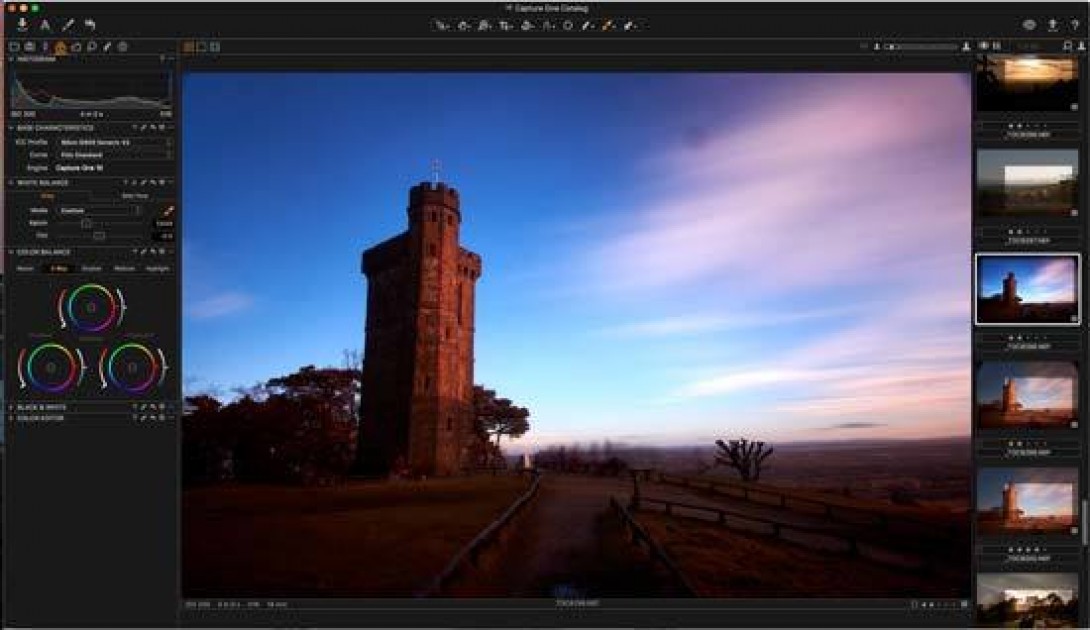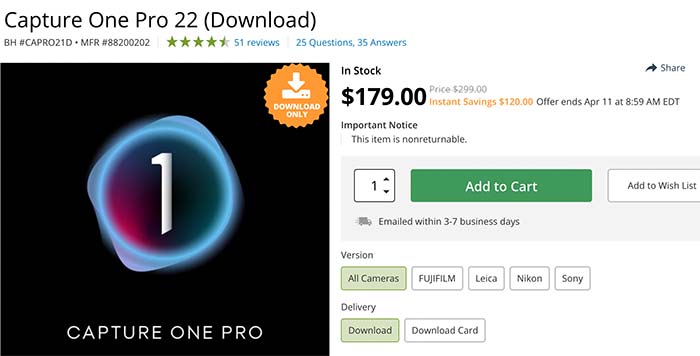

If you already bought some preset packs from a brand or influencer, you should check to see if they’re compatible with Capture One as well as Lightroom. As you scroll over the preset names, you can get a real-time preview of how it will affect the image.Ĭapture One Pro also supports third-party presets. Capture One’s presets, however, provide simple adjustments that I have found helpful on more than one occasion. As with many other editing programs, many of the styles deliver somewhat underwhelming results that look rather unnatural. Once you start working on the image, Capture One offers a number of styles and preset looks to choose from.
Capture one pro 10 price software#
Every raw conversion software works slightly differently and whatever Capture One does, seems to work at least a little better than its competition.

When it comes to pure image quality, I find Capture One the best in the bunch. Image quality The built-in styles and presets have some winners and some you’ll probably never use. In Lightroom, local adjustments aren’t as flexible and don’t give you as much forgiveness if you mess up. Capture One adds adjustment layers to your image so you can easily tweak and even discard them if you screw up. Those selective adjustments mentioned above represent another way in which Capture One works very differently from Adobe Lightroom Classic. They allow you to crop, rotate, and even add selective adjustments to the image.

These are more similar to Photoshop’s tools. You’ll find a row of cursor tools across the top of the frame. The Exposure panel contains most of the familiar sliders for adjusting things like exposure and color balance. Within those panels, you’ll find all the standard editing options, as well as some more advanced adjustments for high-skill users. Capture One splits its editing tools up into panels, which are represented by icons in the top left area of the interface. Here’s where things start to get a little complicated, at least if you’re new to the program. Starting the edit process with Capture One Pro Lightroom doesn’t offer this feature at all. Conglomerating everything into one big file would be handy for managing space, though. I prefer to leave my photos in their folders, mostly out of paranoia. If you’ve ever used Apple Photos or even Apple’s old pro-grade image processing software, Aperture, this is the same basic mechanism. You can reference files that sit in folders on your hard drive or the program gives you the option to bring the files into the CaptureOne Library and store everything in one enormous file. Stan HoraczekĬapture One Pro gives you two options when you’re importing images. Getting organized The interface will take some getting used to if you switch from Lightroom Classic. Then, you can export a finished version while leaving your raw file untouched. Capture One keeps track of your adjustments and lets you see them in real-time as you make changes. It’s a non-destructive editor, which means it leaves your original files alone during the editing process. You drag in raw files from your camera, sort them, edit them, then export finished versions to match your specific needs. Like Lightroom Classic, Capture One 21 Pro is designed to handle your entire raw processing workflow. Here’s a look at the latest version of Capture One to help you decide the future of your photography workflow. It also has some distinct advantages over its venerable adversary, Adobe Photoshop Lightroom Classic.

It still comes with a learning curve, but it’s now one of the most powerful and complete image editing programs around. Capture One Pro software has come a long way from those days, though. Or perhaps it’s the fact that it used to be designed specifically for high-end photographers shooting with fancy Phase One medium format digital cameras. Getting started with Capture One Pro can be intimidating.


 0 kommentar(er)
0 kommentar(er)
